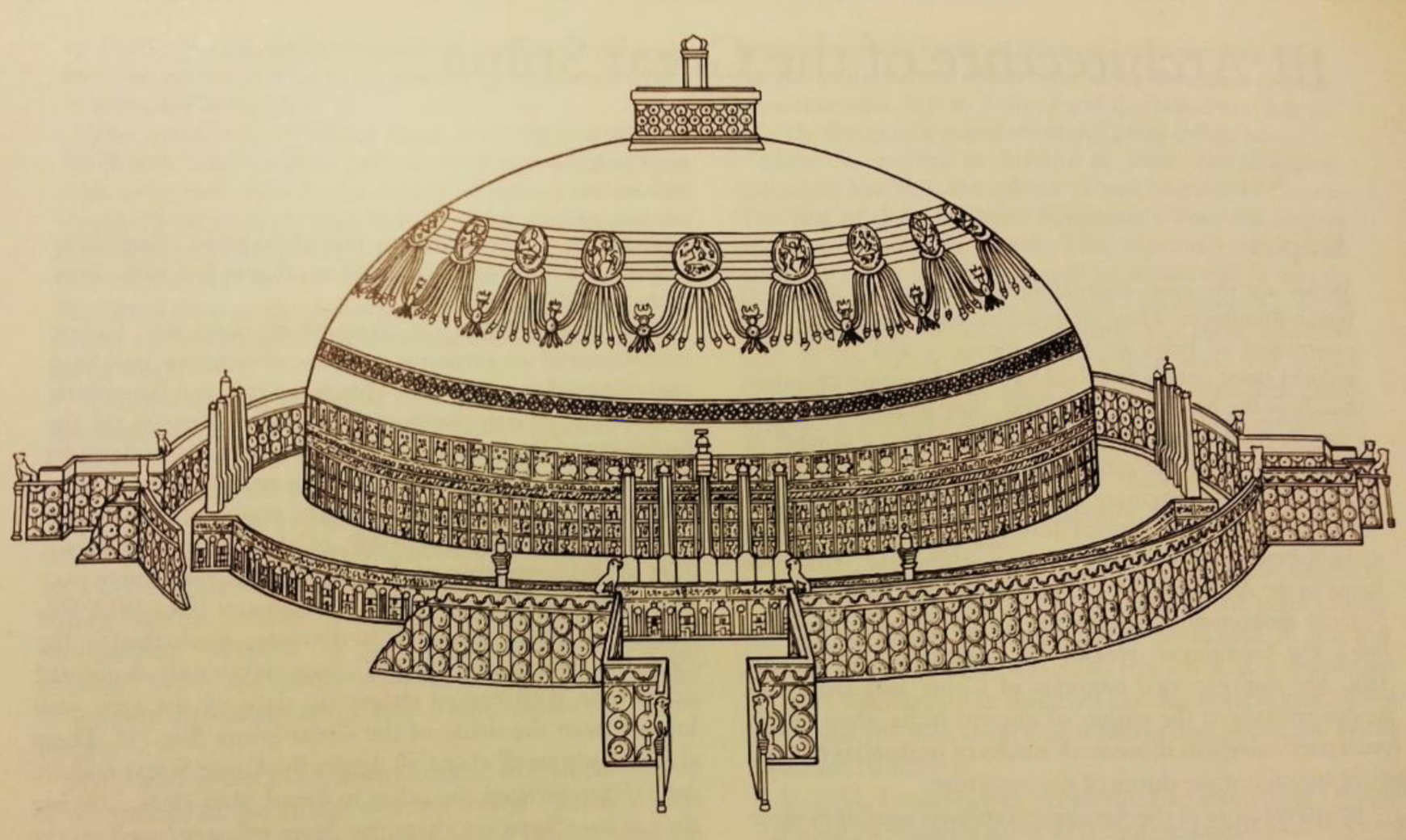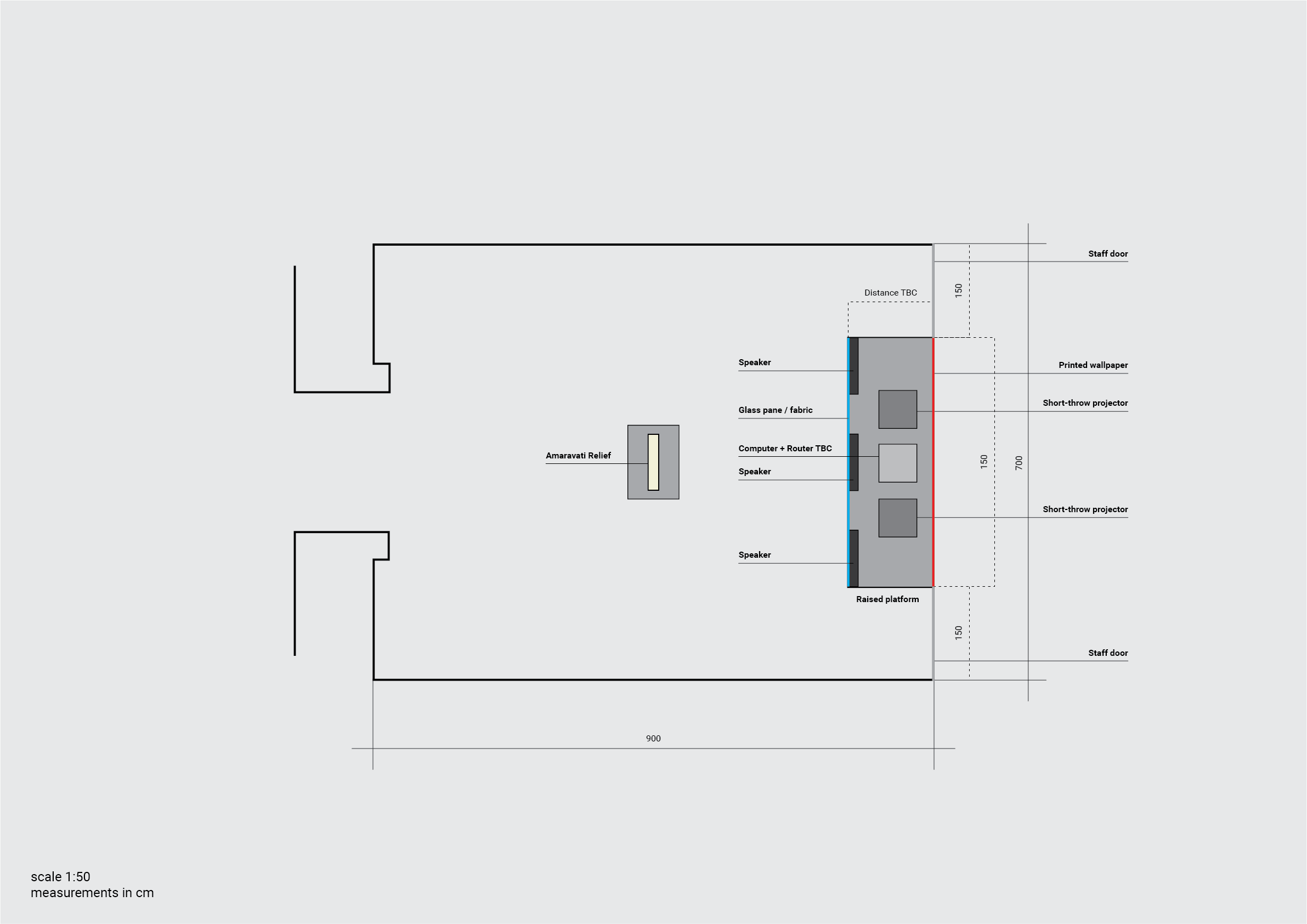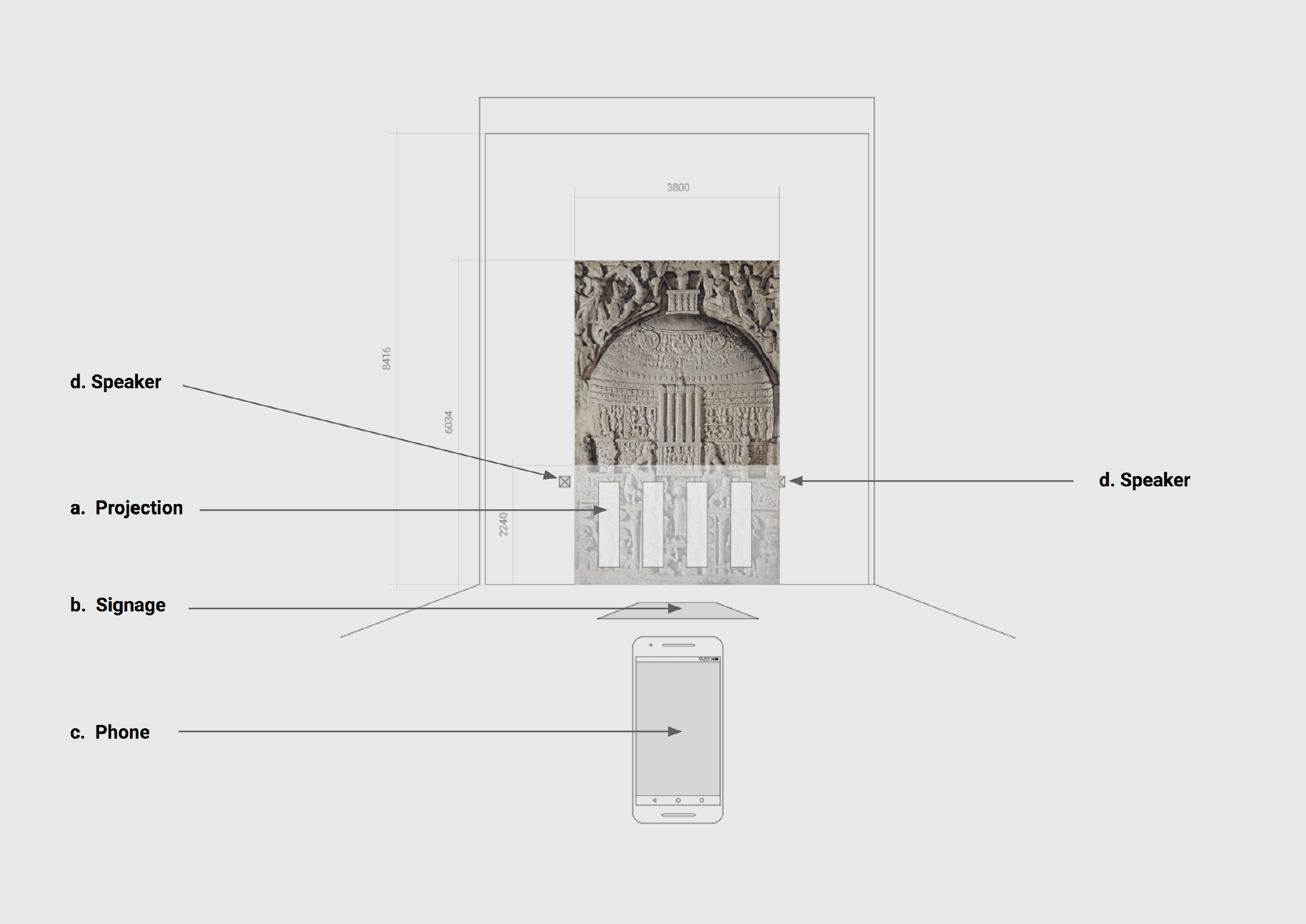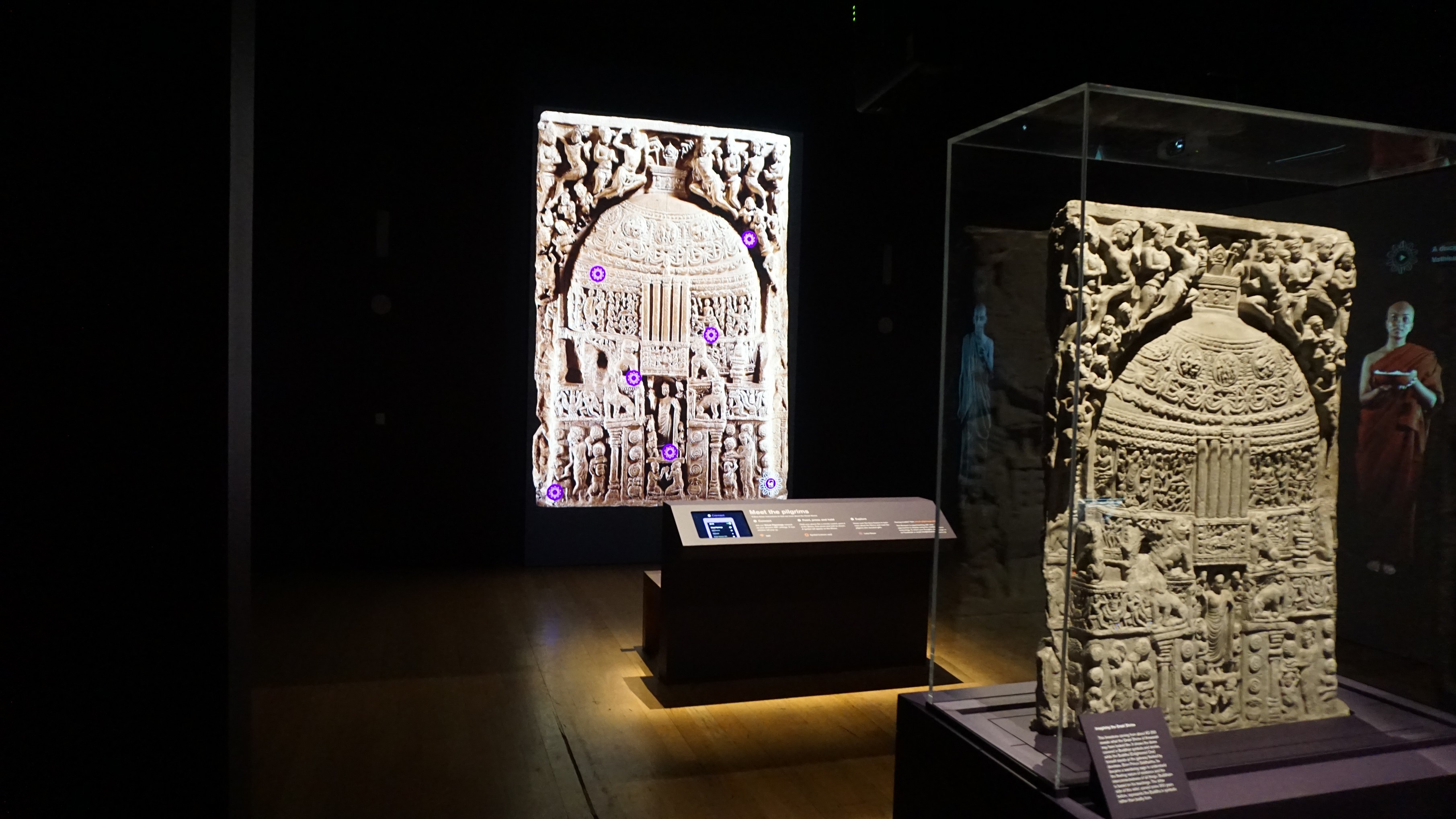The British Museum houses a vast collection of the world’s artefacts that were sourced during the era of the British Empire. The Asahi Shimbun Displays in Room 3 of the Museum, showcase a single or small group of objects from the collection, with the intent of deeper examination. These displays are also a testing ground for innovation in exhibit design.
The relic
The focus of the upcoming exhibition was a double-sided, limestone relief from the The Great Shrine at Amaravati. The relief was first carved on one side in the 1st century BC (featuring the Buddha as an empty throne), and then turned over and carved on the other side in the 3rd century AD, featuring a corporal Buddha standing in front of the shrine.
The curatorial team at the British Museum wanted to create an immersive experience of the Shrine site, enabling visitors to imagine themselves as ancient pilgrims, circling the shrine, and to allow visitors to understand the historical and social significance.
Read more about Virtual Pilgrimage at The Guardian.
The concepts
I worked with my design colleagues to come up with a range of ideas which included:
Magnification: allowing visitors to magnify the intricate carvings
Illumination: allowing visitors to uncover the original brightly painted colours of the relief
Recreation: recreating a digital version of the stupa in order to display the relief in context
Passage of time: highlighting the time that has past between the two sides of the relief
We worked closely with the BM’s curatorial team, based in London, to determine a concept that would best suit the purpose of the exhibition.
I began by mapping out the interaction touch points and drafted rough spatial plans for the experience.
Projection experimentation
We tested a range of different fabrics for the projection, to see which would carry the best image without sacrificing transparency for quality, ranging from mesh fabric to high quality projection materials.
Our team re-created the space that the exhibition would be housed in, to begin prototyping the physical and digital experience. We darkened the room by hanging up black fabric all around the room’s window, and printed out repeats of the relief to mimic the enlarged background. By hanging a semi-translucent fabric for the projection, and creating mock videos of how the virtual pilgrims would interact with the audience, we were able to specify how the videos were to be produced and stitched together, and the final physical setup that would be required.
Experimentation with different types of materials for the projection
Prototype of the physical space and interactive projections
© Pleat Studio 2024



